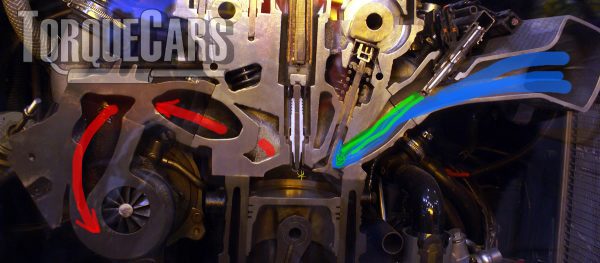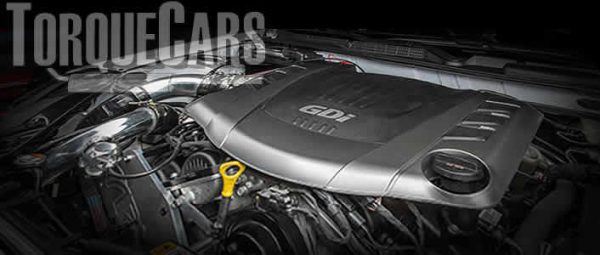Miller, Otto and Atkinson Cycle Engines
Differences Between Otto, Miller and Atkinson Cycle Engines
We are familiar nowadays with the four-stroke engine, named the Otto Cycle.
It describes the cycle of a typical internal combustion engine. Firstly the air is sucked into a cylinder at a stable pressure.
Then this air is compressed by the piston moving from bottom dead centre to top dead centre.
The fuel is injected at this point and ignites via a spark plug. The mixture is then burned and forces the piston down in the chamber with the subsequent gasses escaping through valves that open up.
It was named after Nikolaus Otto, who was the inventor of this engine cycle in 1867. Much later in the 1940’s came the Miller-cycle, after Ralph Miller.

Mazda utilises this cycle in some of their recent vehicles. With Miller comes a slightly altered setup than Otto.
It firstly relies on a supercharger, and secondly, during the compression stage of an engines cycle, it has an open intake valve.
This enables pressure being acted upon the supercharger instead of the cylinder walls. The pros and cons will be explained later.
An Atkinson cycle engine is of increasing popularity in hybrid powertrains, with a main aim of adjusting valve timing.
Being similar to an Otto cycle, the Atkinson also leaves the intake valve open for a short time during compression stroke.
Decreasing compression ratio to around 8:1 and lowers the pressure on the piston on the power stroke.
Pros and cons of each.
Let's compare these different engine cycles and weigh up the pros and cons of each one of them.
Miller Cycle Engines
The Miller cycle has less compressed air lost over an Atkinson Cycle.
This results in a more efficient setup, as high as 15%. Compression is maintained as it does in an otto cycle engine, but for much less work.
This only works if the turbo/supercharger pushing the air in squashes the air using less energy than the pistons would.
A Miller Cycle engine can be tuned with variable valve timing to suit engine loads and RPMs. It can even be turned off altogether, leaving full adjustability to the engine designer.
The main disadvantage is when using forced induction, the lower rev ranges offer less power due to the turbo taking time to spooling up.
Less exhaust gas pressure results in less air compression and lower power. The added complexity of these engines means they are more expensive to develop. With added air management systems and more components required such as intercoolers and valves.
Otto Cycle Engines
Being widely used as the modern automobile engine cycle, you would imagine there are a lot of advantages to them. Firstly the reliability of these systems have been proven and optimised over time, meaning they are common and simple to design.
The cycle itself has excellent power to weight ratio, without the need for extra forced induction and cooling components.
It is, therefore, cheaper to produce than the Miller or Atkinson cycles. Plus, it has excellent thermal efficiency over the other cycles.
Its low compression ratio and limitation to mostly petrol setups mean it is less efficient than a diesel engine. Heavier vehicles struggle to use this setup due to them needing high torque, and it is not as efficient, requiring spark plugs.
Atkinson Cycle Engines
Atkinson result in all four engine strokes in one complete rotation of the crank. Which in turn provides greater efficiency, and with lower compression in the cylinder results in less fuel being used to turn the engine.
As excess force was not wasted otherwise pushing the cylinder downwards during an engine cycle (as it would in the Otto Cycle).
The downside of the Atkinson setup is less force and fuel consumption equals less power.
The compression ratio is lower, and the weaker fuel mixture produces a lower power output than an Otto cycle engine setup.
They are often used in hybrid engines, where batteries and motors make up for the lack of power and creates a very flexible but economical engine setup.
It also has extra linkages and parts in its design, with more complex manufacturing setups and therefore costs more to produce than other cycles.
What is the main difference between Miller and Atkinson cycle engines?
The main difference involves the addition of a supercharger. It acts as a forced delivery of air which adds power to lower speeds, something that an Atkinson cycle would fall down on.
The Miller cycle adds a variable valve timing to its setup too.
Altering the timing of the intake valves and when they shut. This has a smaller compression ratio during increasing loads on an engine, which more power can be produced without the risk of the engine straining thermally.
Miller filed his two patents on this first in 1947 where 4-stroke diesels were implementing this technology with turbo and intercoolers. The second followed in 1956 for petrol engines that required a spark plug, with or without forced induction.

Can you tell the difference between an Atkinson and Otto engine?
The modern setup means it is very difficult to distinguish between the two.
As Atkinson’s difficult crankshaft setup can be eliminated with variable valve timing - which is less expensive, and more simple to set up.
Can the Atkinson cycle be used in a rotary engine?
This setup can be achieved. In fact, it is better for efficiency to use the Atkinson cycle as power is increased and fuel consumption is lowered. As all strokes are achieved in one rotation of the engine.
A rotary engine ejects exhaust gasses by using a method called scavenging.
Meaning the exhaust gasses are swapped with fresh air/fuel mixture for the following engine cycle. Allowing for alternate fuels such as diesel and hydrogen to be used.
Can a Honda Fit switch between Atkinson and Otto cycles?
The Honda Fit has a sophisticated engine, with the 3rd generation models offering Atkinson and Otto cycle switching in their line-up.
They achieve this through variable valve timing, as the inlet valve is not fully closed when the piston passes top dead centre, achieving a lower compression ratio.
How does heat loss affect the RCM of the Atkinson cycle?
The bigger the heat transfer to the sides of the combustion chamber, the lower the maximum temperatures and pressures, meaning the engine will not run as efficient during an Atkinson cycle.
The compression ratio (RCM) of the Atkinson cycle is reduced when heat escapes through combustion, as it results in heat being lost from the cycle.
Conclusion
Being named after the so-called inventor of these cycles, the Miller cycle was initially thought out in 1927 for aircraft engines.
It was a concept of using alternate valve timing to reduce knock in these engines as a result of low octane fuel.
The Atkinson cycle engine was radical at the time as it had only one revolution of the crank per a 4-stroke cycle. Subsequently, a lower compression ratio was achieved versus the expansion ratio.
It was also a way to improve the efficiency and longevity of the internal combustion engine.
With the Otto cycle being the basis of most engines we see today. With that familiar suck squeeze, bang, blow terms we hear as the common joke amongst car enthusiasts!
Please Check out my YouTube channel, we're regularly adding new content...
PLEASE HELP: I NEED YOUR DONATIONS TO COVER THE COSTS OF RUNNING THIS SITE AND KEEP IT RUNNING. I do not charge you to access this website and it saves most TorqueCars readers $100's each year - but we are NON PROFIT and not even covering our costs. To keep us running PLEASE Donate here
If you liked this page please share it with your friends, drop a link to it in your favourite forum or use the bookmarking options to save it to your social media profile.
Feedback - What do You Think?
Please use our forums if you wish to ask a tuning question, and please note we do not sell parts or services, we are just an online magazine.
Help us improve, leave a suggestion or tip
Please watch this video and subscribe to my YouTube channel.

 Click to accept YouTube Cookies & Play.
Click to accept YouTube Cookies & Play.